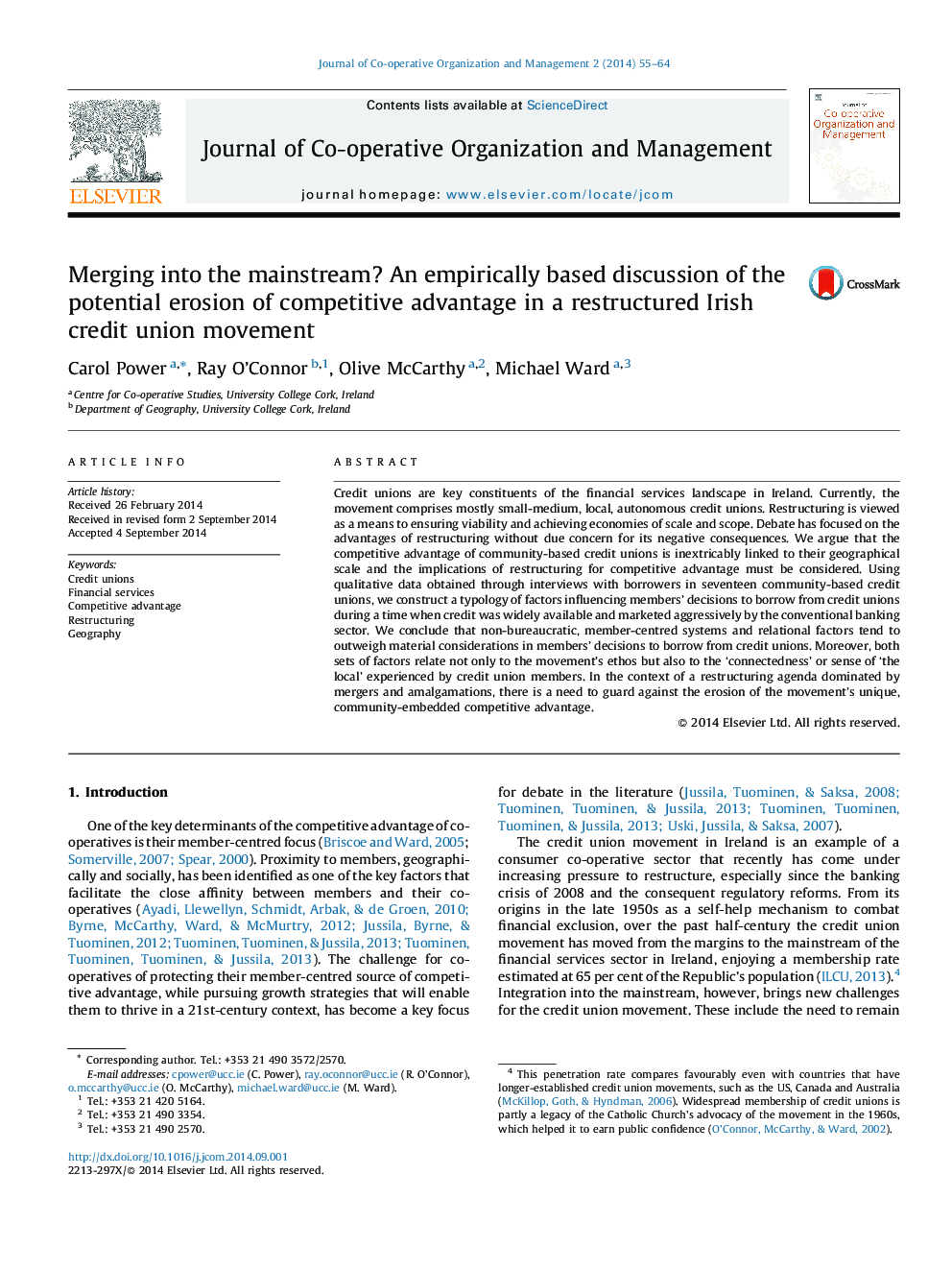| Article ID | Journal | Published Year | Pages | File Type |
|---|---|---|---|---|
| 1019957 | Journal of Co-operative Organization and Management | 2014 | 10 Pages |
•We investigate reasons why regular credit union borrowers exhibited a preference for credit union loans at a time when credit was widely available from other sources.•We develop a typology of reasons for the preference for credit unions – tangible factors (systems and material benefits) and intangible factors (relational and socio-psychological).•These factors are strongly linked to the geographical scale at which credit unions operate.•Connection and affinity with members is a key source of competitive advantage for credit unions.•Mergers threaten to weaken this competitive advantage, which depends on local connectedness.
Credit unions are key constituents of the financial services landscape in Ireland. Currently, the movement comprises mostly small-medium, local, autonomous credit unions. Restructuring is viewed as a means to ensuring viability and achieving economies of scale and scope. Debate has focused on the advantages of restructuring without due concern for its negative consequences. We argue that the competitive advantage of community-based credit unions is inextricably linked to their geographical scale and the implications of restructuring for competitive advantage must be considered. Using qualitative data obtained through interviews with borrowers in seventeen community-based credit unions, we construct a typology of factors influencing members’ decisions to borrow from credit unions during a time when credit was widely available and marketed aggressively by the conventional banking sector. We conclude that non-bureaucratic, member-centred systems and relational factors tend to outweigh material considerations in members’ decisions to borrow from credit unions. Moreover, both sets of factors relate not only to the movement's ethos but also to the ‘connectedness’ or sense of ‘the local’ experienced by credit union members. In the context of a restructuring agenda dominated by mergers and amalgamations, there is a need to guard against the erosion of the movement's unique, community-embedded competitive advantage.
